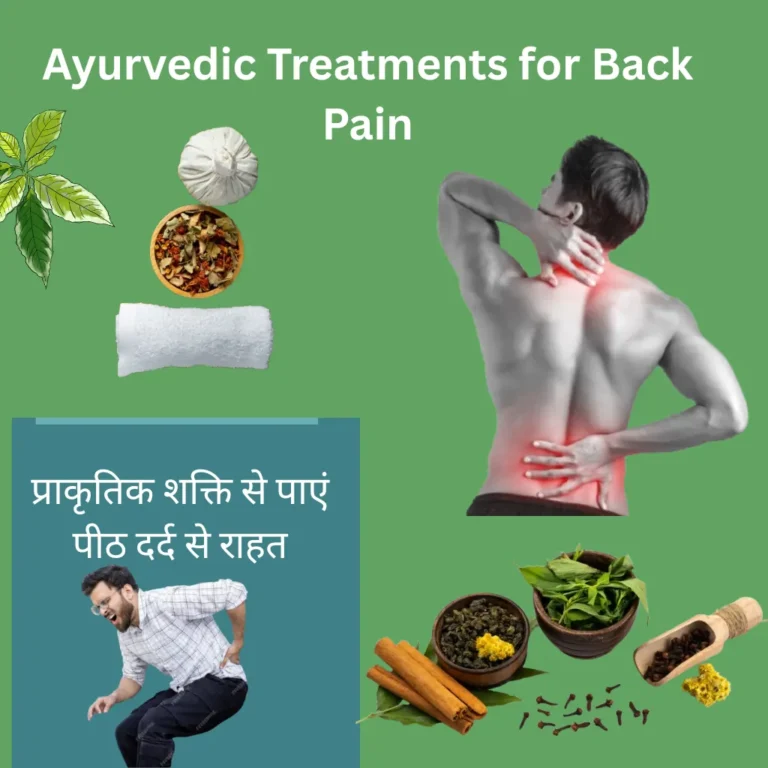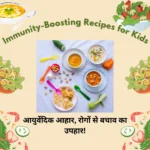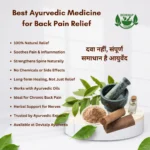Ayurvedic Treatments for Back Pain – A Natural and Holistic Healing Approach
Back pain is one of the most common health complaints affecting people across all age groups. Whether due to long hours of sitting, poor posture, injuries, or underlying health conditions, back pain can significantly impact your quality of life. While conventional treatments often rely on painkillers, physical therapy, or even surgery, many individuals are now turning to Ayurvedic treatments for back pain as a holistic and long-lasting alternative.
Ayurveda, an ancient system of medicine rooted in India, takes a comprehensive and individualized approach to healing. Rather than merely suppressing symptoms, Ayurvedic medicine focuses on addressing the root cause of pain through natural therapies, herbal formulations, lifestyle adjustments, and dietary recommendations.
In this comprehensive guide, we will delve into the Ayurvedic understanding of back pain, explore various effective Ayurvedic treatments for back pain, and offer practical tips on how you can integrate this ancient wisdom into your daily life for sustainable relief and improved spinal health.
Understanding Back Pain in Ayurveda
In Ayurveda, back pain is primarily associated with an imbalance in the Vata dosha. Vata is the dosha that governs all movement in the body, including nerve impulses, circulation, and elimination. When Vata becomes aggravated—due to factors like stress, cold exposure, irregular eating habits, or excessive physical activity—it can localize in the spine and joints, resulting in stiffness, inflammation, and pain.
However, back pain can also involve other doshic imbalances:
- Pitta imbalance may lead to inflammatory back conditions.
- Kapha imbalance can result in stiffness, heaviness, and swelling.
- Ama (toxins) may accumulate in the musculoskeletal system and obstruct normal functioning, causing chronic discomfort.
Understanding the specific doshic involvement is crucial for customizing an Ayurvedic treatment plan that restores balance and promotes healing.
Types of Back Pain and Ayurvedic Interpretation
| Type of Back Pain | Ayurvedic Viewpoint | Primary Dosha Involved |
|---|---|---|
| Lower Back Pain (Lumbago) | Weak bones, muscle fatigue, Vata aggravation | Vata |
| Sciatica | Nerve compression, radiating pain | Vata and Pitta |
| Stiffness in the Morning | Kapha accumulation, lack of mobility | Kapha |
| Inflammatory Back Conditions | Presence of Ama, digestive weakness | Pitta and Ama |
Accurate diagnosis of the pain type and the doshic involvement allows for a targeted and effective Ayurvedic treatment plan.
Ayurvedic Treatments for Back Pain
1. Herbal Remedies
Ashwagandha (Withania somnifera)
Ashwagandha is a powerful adaptogen that strengthens the musculoskeletal system, reduces stress-induced tension, and promotes relaxation. It enhances stamina and reduces inflammation.
- Usage: 1 teaspoon powder with warm milk, preferably at bedtime.
Guggulu (Commiphora mukul)
Guggulu has potent anti-inflammatory and analgesic properties. It is often used in classical Ayurvedic formulations such as Yograj Guggulu and Kaishore Guggulu to manage chronic back pain and arthritis.
Shallaki (Boswellia serrata)
Shallaki is known to reduce swelling and improve mobility. It is especially useful in degenerative conditions of the spine.
Rasna
Rasna is commonly used in external applications and decoctions. It relieves joint stiffness and backache caused by Vata aggravation.
2. External Therapies
Abhyanga (Oil Massage)
Abhyanga involves a full-body massage with warm medicated oils tailored to an individual’s dosha. It improves blood flow, reduces stiffness, and calms the nervous system.
- Recommended oils: Mahanarayan Taila, Dhanwantharam Taila, Kottamchukkadi Taila.
Kati Basti
Kati Basti is a localized oil therapy where warm medicated oil is retained over the lower back using a dough ring. This therapy is highly effective for lumbar spondylosis, herniated discs, and chronic lower back pain.
Pinda Sweda (Herbal Poultice Therapy)
In this therapy, herbal poultices are warmed and massaged over the back to relieve muscular tension, stiffness, and pain. It also aids in detoxification and rejuvenation.
3. Panchakarma Therapies
Basti (Medicated Enema)
Basti is the most effective therapy for Vata-related disorders. It involves the administration of medicated oil or herbal decoctions through the rectum to cleanse and nourish the colon and lower spine.
Virechana (Purgation Therapy)
This treatment helps eliminate excess Pitta and Ama. It is particularly beneficial for inflammatory back pain and digestive-related toxins that affect the spine.
These therapies are typically conducted under the supervision of an experienced Ayurvedic practitioner in a clinical setting.
Ayurvedic Lifestyle and Dietary Recommendations
Daily Habits
- Maintain a regular routine with adequate sleep.
- Avoid sitting for long periods. Use ergonomic chairs and take frequent breaks.
- Stay warm, especially in colder climates, to prevent Vata aggravation.
- Engage in regular, moderate physical activity like walking or swimming.
Diet
- Eat warm, cooked foods that are easy to digest.
- Include spices like turmeric, ginger, cumin, and garlic.
- Avoid cold, raw, and processed foods that increase Vata and Ama.
- Drink herbal teas made with ingredients like ginger, tulsi, or coriander.
- Use healthy fats such as ghee and sesame oil to nourish joints.
Yoga and Physical Practices
Regular yoga practice can be highly effective in managing and preventing back pain. It helps to improve posture, strengthen the spine, and release muscular tension.
Recommended Yoga Asanas
| Asana | Benefits |
|---|---|
| Bhujangasana (Cobra Pose) | Strengthens lower back muscles |
| Marjaryasana (Cat Stretch) | Increases spinal flexibility and blood flow |
| Setu Bandhasana (Bridge) | Strengthens spine and pelvic muscles |
| Balasana (Child’s Pose) | Provides gentle stretch and relaxation |
All yoga practices should be done mindfully and preferably under the guidance of a trained yoga instructor, especially if there is a history of chronic or severe back pain.
When to Consult an Ayurvedic Practitioner
While many Ayurvedic treatments for back pain can be tried at home, it is essential to consult a qualified Ayurvedic doctor in the following situations:
- Persistent or worsening pain lasting more than two weeks
- Pain that radiates down the legs (possible sciatica)
- Numbness, tingling, or weakness in limbs
- Inability to perform daily activities due to pain
- A history of spinal injuries or surgeries
A certified Ayurvedic practitioner can conduct a thorough assessment and develop a personalized treatment plan based on your body constitution (Prakriti), doshic imbalances (Vikriti), and lifestyle.
Ayurvedic Treatment for Neck Pain
Conclusion
Ayurvedic treatments for back pain offer a holistic and time-tested approach that not only alleviates discomfort but also restores overall balance and vitality. By addressing the root causes of pain and embracing a lifestyle rooted in Ayurvedic principles, individuals can experience long-term relief and enhanced well-being.
If you are struggling with back pain and looking for a natural, side-effect-free solution, Ayurveda could be your answer.
Take the first step toward healing today.
- Book an Ayurvedic consultation at Devkalp Ayurveda
Let the wisdom of Ayurveda guide you back to co.mfort, strength, and balance
Frequently Asked Questions (FAQs)
Ayurveda is highly effective when the treatment plan is customized and followed consistently. Chronic cases often require Panchakarma, herbal medicines, and lifestyle changes.
Yes. In fact, combining Ayurvedic therapies with physical therapy often enhances results and promotes quicker recovery.
When used correctly and under supervision, Ayurvedic remedies are generally safe. However, improper usage or dosage can cause imbalances, which is why professional guidance is important.
Mild back pain can improve within a week or two. Chronic or severe cases may take 4–8 weeks or more depending on the underlying causes and the individual’s response.


